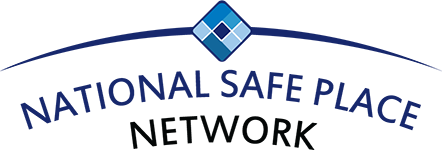- Home
- About
- Membership
- Services
- Member-Exclusive Services
- Public Engagement Opportunities
- Support Center
- Request Support
- NSPN Connect
- Member Profile
- NSPN Members
- Licensed Safe Place Partners
- Online Learning (The D.O.T)
- Safe Place Ambassadors
- Board of Directors
- Funding
- News
- Publications
- Contact
- Donate
Recognizing 50 Years of Federal Protection for Young PeopleOn September 7, 1974, President Gerald Ford signed a law establishing protections for youth within the juvenile justice system. This same law included Title III (Runaway Youth Act) which authorized funding for runaway and homeless youth programs (Basic Center Program). Such inclusion of language specific to runaway youth was the direct result of a group of passionate advocates who used their energy, passion, and experience with the population to raise their voices until congress listened. This group, formally established in 1974 as the National Network of Runaway and Youth Services, is now known as the premier advocate for youth who have runaway or are experiencing homelessness. The National Network for Youth (NN4Y) celebrates 50 Years of Impact this year and National Safe Place Network (NSPN) congratulates all of the advocates from past to present who continue to respond to the need of youth and threats to their well-being. You can learn more about the critical role of NN4Y by viewing the organization's timeline here. NSPN's history is linked closely to the Runaway and Homeless Youth Act (RHYA). In 1983, Larry Wooldridge, an employee of Shelter House, a shelter and basic center program of the YMCA of Greater Louisville created Project Safe Place. Federal monitors recognized the potential for replication and the Project Safe Place was introduced to other basic center programs as part of a Southeastern Network of Youth and Family Services regional meeting (a regional training and technical assistance provider funded through the Act). Safe Place now exists in 39 states and the majority of licensed agencies operate basic center, street outreach, transitional living, and maternity group home programs – all funded by the legislation which originated 50 years ago. As Title III of the Juvenile Justice and Delinquency Prevention Act, RHYA was included in a law that established other critical protections for youth. The Juvenile Justice and Delinquency Prevention Act (JJDPA) of 1974 (Pub. L. No. 93-415, 42 U.S.C. 5601 et seq.) The JJDPA created an Office of Juvenile Justice and Delinquency Prevention (OJJDP) within the DOJ Law Enforcement Assistance Administration (LEAA) now the Office of Justice Programs.
Efforts to continue key legislation for youth, specifically youth who have runaway or are experiencing homeless are more important than ever. Without authorization, congress could choose to discontinue funding for the Runaway and Homeless Youth Program. This federal program administered by the Family and Youth Services Bureau (FYSB) creates the process and funding which support local efforts to support this population through funding for emergency shelter, outreach, and transitional living programs. The Runaway and Homeless Youth and Trafficking Prevention Act (S.3125/H.R.6041) has not yet been authorized and just like that group of advocates who rode buses to the capitol 50 years ago to make a difference – you can make a difference and be part of this significant legacy of commitment to youth. NSPN encourages your organization and each of your employees to consider sharing your support for this important reauthorization. Show your support for the reauthorization of the RHYTPA. |




